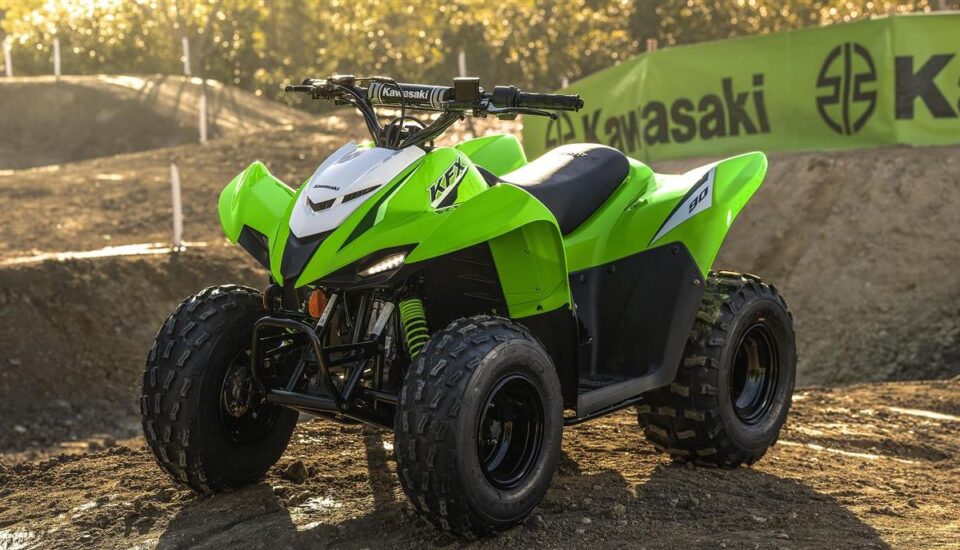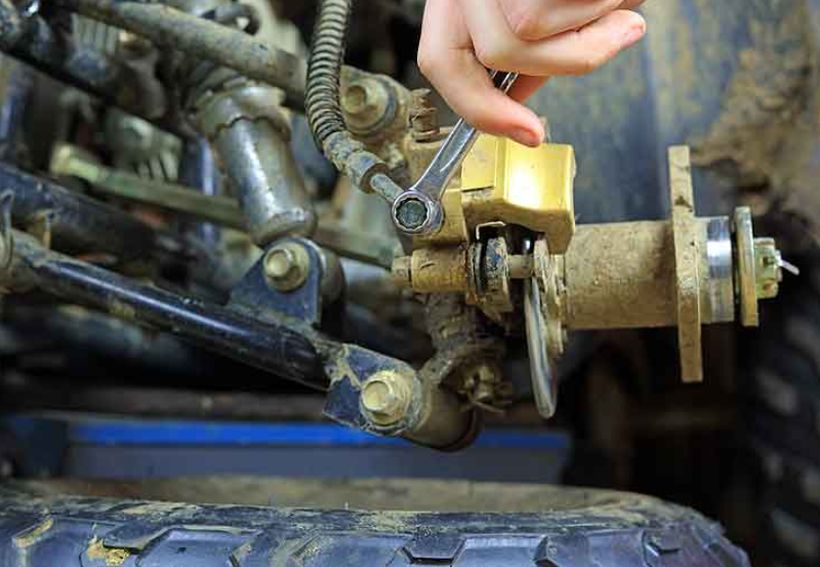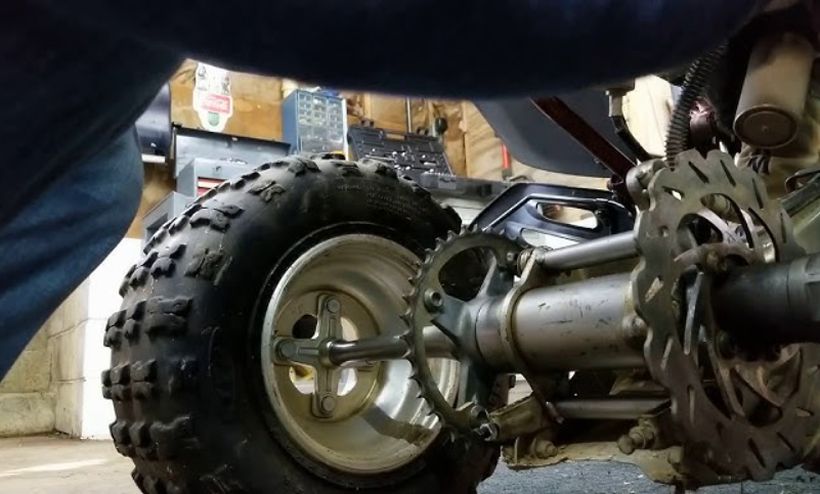Whether you’re priming your ATV for next season, or getting hyped about winter, a good place to start is with the brakes. These require more than just the odd inspection to see if there are signs of wear. Having top-notch brakes is mostly about stopping power, but they can also impact performance, especially if you expect a bit more from your vehicle when hitting tougher terrain. Brakes that are in working order won’t impact basic maneuvers, such as steering clear of unexpected obstacles, or slow-speed turning.
Like all vehicle parts, brakes and brake assemblies need proper maintenance. And if you’ve put in more miles on your ATV or UTV, you’ll soon start to notice that they’ll need replacing. For vehicles based on disc brakes, it’s the brake pads that throw up the first symptoms. You may hear odd noises as worn friction surfaces scrape against discs, find braking distances becoming longer, and notice a loose or spongy feel in the levers or pedals.
Kawasaki uses disc brakes as standard across all it’s mid-range and high-end offerings. The Teryx, for instance, has discs front and back, backed by multi-piston calipers for great stopping power. Entry-level models of the Mule and the company’s youth KFX models may revolve around drums or have a combo of drum and disc brakes.
All configurations get vehicles to a safe stop, but it’s the lime green quad bikes and side-by-sides with higher engine output that undeniably offer more fun. The higher speeds, faster acceleration, and more weight mean you’ll be changing out basic components like Kawasaki ATV brake pads a bit more often, just to stay on the safe side.
Signs of Worn or Faulty Brakes
ATVs and UTVs are meant to be pushed hard through all sorts of terrain and in any type of weather. The chassis and suspension are purpose-built for this sort of thing, and the meaty drivetrains mean you won’t get stuck no matter where or how you’re driving. The brakes though cop the most abuse. Pads and discs are constantly exposed to dirt, mud, and water and these are the biggest killers of ATV brakes. Excessive dirt acts as an abrasive and gradually eats its way through metal surfaces, and mud and water quickly result in rust. Regular cleaning after every run can help, but if you notice the following signs, then it’s time for a replacement:
- Odd noises when braking – if you hear grinding or screeching noises each time you pull the lever or depress the pedal, it’s the worn friction materials on the pads grazing against the discs.
- Longer braking distances -this one can get you in trouble. You expect brakes to work every time, but warped discs or overrun pads can let you down when you need them most.
- Soft or spongy brake feel – this is often down to low or contaminated brake fluid, breaks in the lines, or stuck caliper pistons, meaning brakes engage later on or not at all. Not something you’ll want when at full throttle.
- Vibrations and wheel drag – Uneven wear can cause the vehicle to drag to either left or right when braking, and there can be vibrations through the handlebars or steering wheel.
General Maintenance, Inspecting Pads and Finding Replacements
Cleaning brake discs and pads with sprays and cool water to get rid of built-up mud and grime is just common sense and a short procedure if you want the brakes to last. This should be done before and after longer rides. Just remember to remove any water to prevent rust. ATVs and UTVs should also be inspected for uneven rotor wear. Also check brake assemblies and wheels for pad dust, especially if you think the pads are nearing the backing plates and putting out all sorts of sounds. Lastly, check on the brake fluid levels in the master cylinders, and any signs of wear or punctures in the brake lines if there’s a loss of brake feel.
Parts for all ATV and UTV makes and models are easy to find. When specifically shopping for Kawasaki ATV brake pads, you have the option of going with OEM variants or shop the rich list of aftermarket options. Pads come in different materials and for different purposes, so if you’re looking for better stopping power, shorter stopping distances, and pads that last longer, you’ll find inexpensive and better alternatives to stock pads and brake parts.
Brake Pads Materials
Kawasaki makes a range of ATVs and UTVs meant for different things, so brake assemblies and types will be different across the board. The same applies to brake pads. Materials in pads affect brake force and performance, besides determining how long they last. Here buyers get to choose from three different options: organic, semi-metallic and ceramic pads.
Organic Brake Pads
Organic brake pads are softer and often composed of a mixture of fibres, glass, rubber, and in more expensive variants, Kevlar. They’re usually meant for vehicles with lower power output and slower speeds. They provide good initial bite, so produce good brake feel and modulation at the levers or pedals, and are generally quiet and forgiving when braking harder so won’t damage discs over the long run.
They’re cheap to buy too. Where organic pads fail is in more extreme conditions, such as mud, water and higher speeds in general so will have a hard time bringing bigger and heavier ATVs and UTVs to a stop than say semi-metallic or ceramic pads. They also wear out faster and will produce evident pad dust.
Semi-Metallic and Sintered Pads
Metallic brake pads fall into two categories: semi-metallic and sintered. Semi-metallic types consist of a combination of different metals, including copper, iron, steel, and composite alloys, with the remaining materials, like resins, acting as adhesives and fillers. They offer a much better brake feel, and a more abrupt bite and are generally considered an entry-level performance pad on machines with medium to high power. They’ll typically last longer than organic pads when fitted to the same machine, but they can get noisy and will eat into rotors much quicker.
Sintered pads go one notch up in the performance department. They’re composed of harder metals fused under high heat. They offer the best brake modulation, the highest brake force, and the best stopping power in bigger and burlier machines. Much of this is how they handle heat caused by the friction between the friction materials in the pads and the discs.
They do suffer slightly when cold but have no rivals when warmed up. Sintered pads do have a few downsides, though. They’re more expensive, are very loud, and will wear out rotors much sooner than both semi-metallic and organic pads. But for tough conditions, such as deep mud or in racing applications they’re the best alternative to your stock pads and a worthy buy.
Ceramic Pads
Lastly, ceramic brake pads consist of a mix of ceramic and metal fibers and polymer binders. They get good brake force provided they’re warmed up, and they benefit from being super quiet and forgiving when it comes to rotor wear. The durable materials also warrant that they easily handle higher temperatures, so they should last the longest. Moreover, ceramic pads produce little to no pad dust. Their only disadvantage is their higher cost and lower availability.
How long brake pads last before they need replacing depends on a few key factors. Besides materials, how and where you drive can mean pads that fail early on or last several seasons. Also, the condition of other brake components like rotors and calipers determines the brake force pads can generate and the wear they go through. A relatively painless way to assess whether pads present potential safety issues is by removing them from the caliper housings and measuring their thickness. Those that are too far gone should be replaced promptly.
Summing Up

Kawasaki has a fine line of ATV and UTV models suited to different types of riders and riding styles. Basic replacement parts like brake pads and other brake components are easy to find and easy on the wallet. Choose between organic, metallic, or ceramic pads to suit your vehicle and how you drive. The reasonable route is changing pads in pairs to provide even brake distribution between the left and right wheels. That’s why pads are sold either as front or rear pairs or as complete packages for all four wheels. just ensure what you’re buying is compatible with your model.




